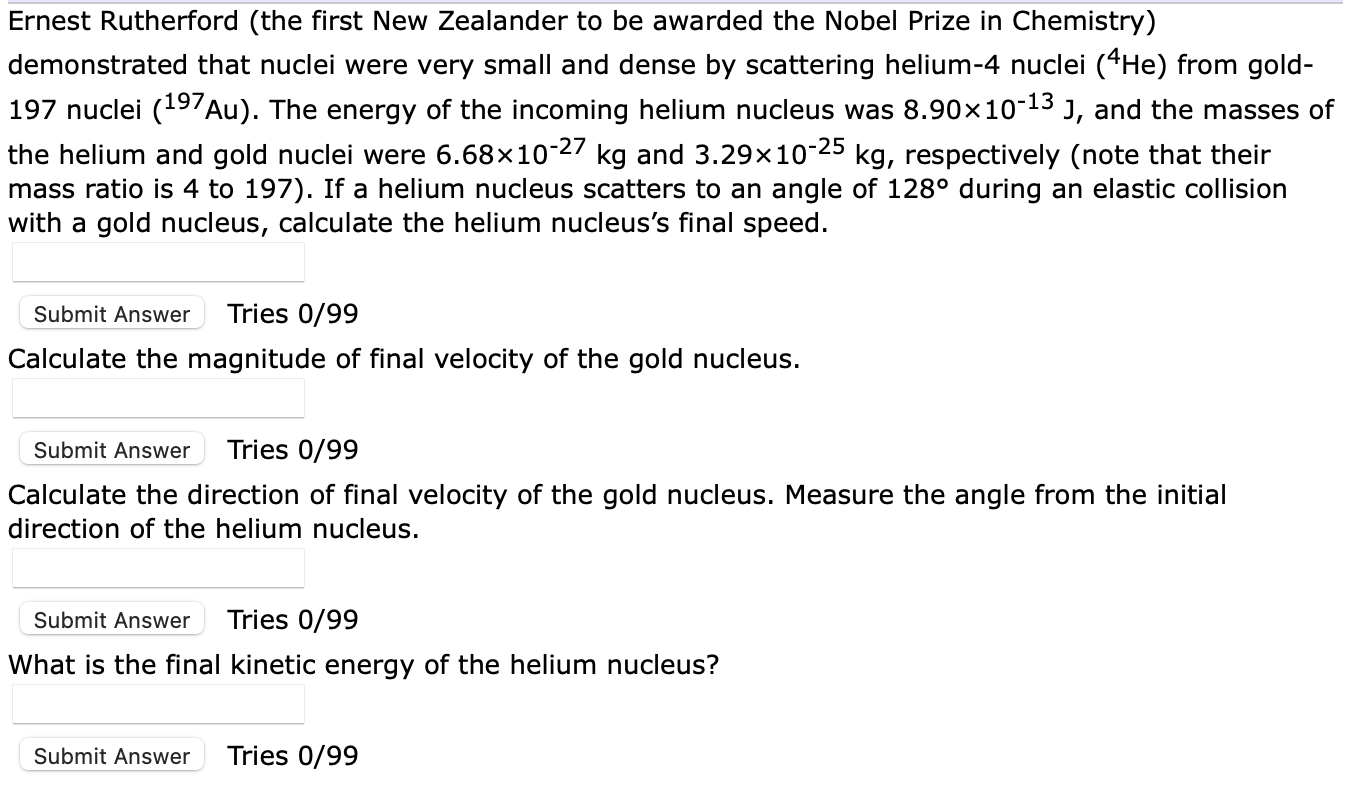Home /
Expert Answers /
Physics /
ernest-rutherford-the-first-new-zealander-to-be-awarded-the-nobel-prize-in-chemistry-demonstrate-pa536
(Solved): Ernest Rutherford (the first New Zealander to be awarded the Nobel Prize in Chemistry) demonstrate ...
Ernest Rutherford (the first New Zealander to be awarded the Nobel Prize in Chemistry) demonstrated that nuclei were very small and dense by scattering helium-4 nuclei \( \left({ }^{4} \mathrm{He}\right) \) from gold197 nuclei \( \left({ }^{197} \mathrm{Au}\right. \) ). The energy of the incoming helium nucleus was \( 8.90 \times 10^{-13} \mathrm{~J} \), and the masses \( \mathrm{C} \) the helium and gold nuclei were \( 6.68 \times 10^{-27} \mathrm{~kg} \) and \( 3.29 \times 10^{-25} \mathrm{~kg} \), respectively (note that their mass ratio is 4 to 197). If a helium nucleus scatters to an angle of \( 128^{\circ} \) during an elastic collision with a gold nucleus, calculate the helium nucleus's final speed. Tries 0/99 Calculate the magnitude of final velocity of the gold nucleus. Tries 0/99 Calculate the direction of final velocity of the gold nucleus. Measure the angle from the initial direction of the helium nucleus. Tries 0/99 What is the final kinetic energy of the helium nucleus? Tries \( 0 / 99 \)
Expert Answer
The absolute mass of the helium nucleus is, m1=6.68×10?27kg The absolute mass of the gold nucleus is, m2=3.29×10?25kg The mass of ratio of helium
